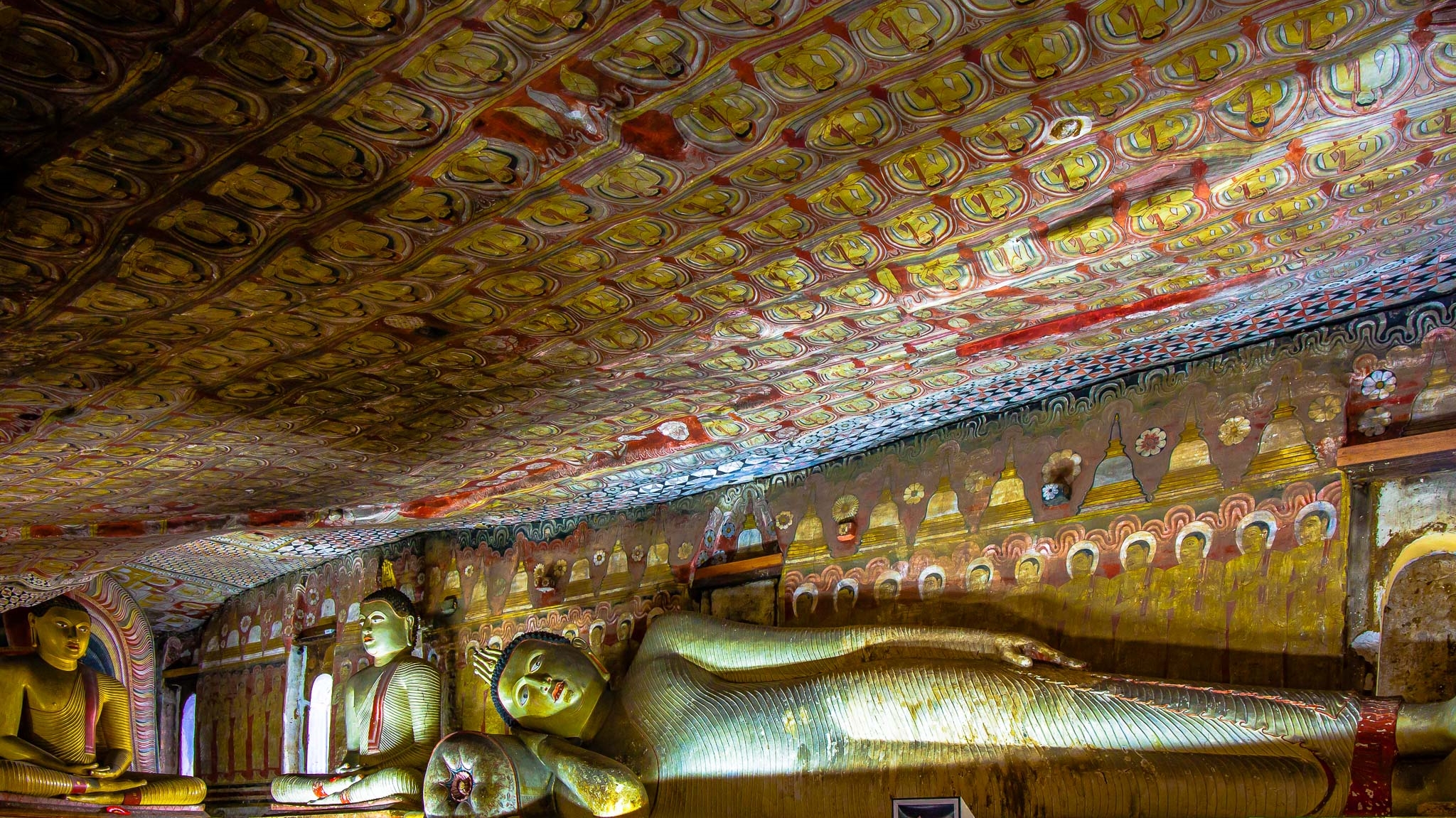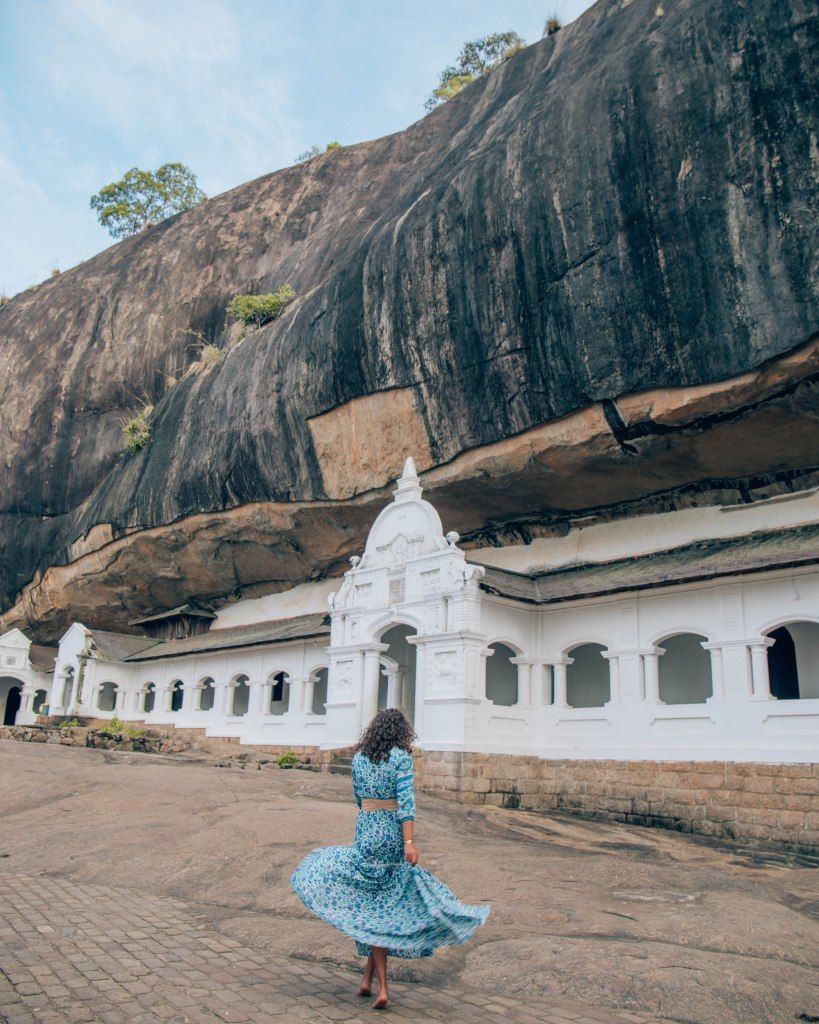

The largest, best-preserved cave-temple complex in
Sri Lanka.
Located in the Matale district, Dambulla Cave Temple is a set of more than 80 large rock-cut, cave temples in Central Sri Lanka. However, majority of the attractive murals and Buddha statues are concentrated in 5 main shrines which are the most impressive. Dambulla Cave Temple Complex holds an important place in the history of Buddhism because of the fact that it has been continuously used as a place of worship for more than two centuries now. Another specialty is that the caves have been painted in such a manner that devotees can systematically move through the spaces and rituals at the same time.


The Rock Temple of Dambulla, called Jumbukola Vihara (Dambulla Cave Temple) in the (Mahavamsa)-the principal Pali Chronicle of Sri Lanka, is situated about forty-seven miles northwest of Kandy, the last capital of the Sinhalese kings, on the main road to Anuradhapura. The shortest way, from Colombo to Dambulla lies via Kurunegala, one of the capitals of the medieval Sinhalese kings. The other rock temple of equal fame, Aluvihare, where, according to tradition, the Buddhist scriptures were first committed to writing about The first century B.C., list about twenty-six miles to the south on the Kandy Dambulla road. And the famous fortress of Sigiriya with its beautiful frescoes rises aloft like a gigantic cylinder at a distance of about twelve miles to the north-east of Dambulla. Dambulla is a scent of unique interest. Its rock temples are the most extensive in the Island, and one of the most ancient, and in the highest state of preservation and order. Dambulu gala (the rock of Dambulla), in which these temples are situated, is almost insulated and of vast size. Its perpendicular height above the plain is about six hundred feet. Very few parts of it are covered with wood, and in general, its surface is bare and black.
Nestled upon a rocky summit 160 metres above the central city of Dambulla, this UNESCO World Heritage Site features sanctified caves with centuries of tales that have shaped the five immaculate Buddhist shrine rooms open for visitors today. A 14-metre rock state of the Lord Buddha sits in the Devaraja Lena, otherwise known as The Cave of the Divine King. The adjacent Maha Raja Vihare, also known as the Cave of Great Kings, perpetuates the Buddhist veneration with 56 statues of the Lord Buddha and other deities. The same cave houses a large statue of the ancient King Valagamba, who took refuge in these very caves for fourteen years due to a South Indian invasion, but upon regaining power of his kingdom, converted them to the sacred site we know them as today.
The Maha Aluth Vihare, or Great New Monastery features paintings and states from the more recent Kandyan period, while the Paccima Vihare and Devana Aluth Vihare offer further devotion into the Buddhist lineage of Sri Lanka, with 153 images of the Lord Buddha and over 1,500 ceiling murals to elegantly complete the historic cave complex.
The temples, which give this place celebrity, are parts of a vast cavern in the west side of the rock, at the height of about three hundred and fifty feet above the plain. Whet her the cavern in which these temples are formed, is altogether natural, or only partly natural, or only partly natural and partly artificial, it is now not easy to determine. The probability is, that it is principally natural, and that man has had very little to do in excavating it. The tradition has it that some of the caves were excavated by king Vattagamani Abhaya in the first century B. C. It can be surmised that this king and his successors, in benefaction to this place had to enlarge and smoothen the caves, and cut the drip-ledge (katarama) along the rock to protect the caves from rainwater.
If you're planning a trip to central Sri Lanka, you NEED to visit the Dambulla Cave Temples....
A 2000 year old operating temple that is being built up as a tourist attraction in a far off land....
A UNESCO World Heritage Site of exceptional beauty, Dambulla Cave Temple....